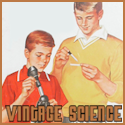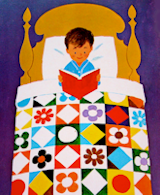© Bernard Buffet, 1956
Dictation, often largely adopted as a method of teaching, is really only a method of testing spelling. A child who makes no mistakes learns nothing from it. Still, dictation, employed, like oral spelling, with moderation and intelligence, is a useful and necessary exercise. It may be made an incentive for the careful study of all the hard words in a given 'piece,' and it shows what pupils and what words call for special attention.
Having selected the passage to be dictated, the teacher reads it aloud. A knowledge of the meaning of the whole will help the childdren to catch the sound of each separate word, and to decide between the different spellings by which the same sound is sometimes represented.
The passage is then dictated in sections of from two to six words, according to the age of the children and to the sense. The teacher should speak clearly enough for every one who is listening to hear and understand, and there should be, as a rule, no repetition. Children will not attend the first time if they think that there will be a second time. The rate of dictation should be regulated by watching a good writer of average speed. 'Copying' must be prevented by every means, moral and mechanical.
After the dictation comes the correction. If this be not thorough, the exercise is worse than valueless. A misspelling indicates a false impression of the form of a word, and this is deepened by iteration. Every mistake must, therefore, be discovered, and the correct spelling written a sufficient number of times to remove the false and imprint the true impression. The best method of correction is for the teacher to examine every exercise himself (the children, meanwhile, being usefully employed), but this is possible only with small classes. The method of mutual correction generally adopted is open to three objections—the corrector's own right spelling may be confused or wrong spelling confirmed by the mistakes of the corrected; errors may be passed over; and there is a constant temptation for the child to look at his own exercise instead of the one before him. This temptation can be largely overcome by good discipline, and entirely obviated by a simple device. The child at the upper end of each row of desks takes his own book (or slate) and that of his neighbour to the lower end of the row; the remaining books (or slates) are then passed up two places.
A better plan than mutual correction is for each child to correct his own, but this can be followed only when the training in honesty and carefulness has been successful.
Whatever method is adopted for marking errors, all words misspelled should be written accurately several times. While this is being done some pleasant occupation should be found for the children who have no errors, and the teacher should go round the class glancing at each exercise, and more than glancing at the exercises of children likely to have many errors.
A note should be made of the words misspelled, and after a few days they should be dictated again, for it must be remembered that memory impressions are deepened by interest or by repetition, and, as spelling cannot often be made interesting, repetition is essential.
(From The Art of Teaching by David Salmon, 1898)
The Dictation Day by Day/Modern Speller Series
Suggestions to Teachers: One dictation exercise constitues a day's lesson; but, in addition, assign three or four words from the review lists which follow every fourth lesson. When the four dictations and the review have been taught, review the week's work and teach no new matter. Keep a list of the words misspelled daily, and on Friday drill on these.
- The Modern Speller, Book 1 by Kate van Wagenen
- The Modern Speller, Book 2 by Kate van Wagenen
- Dictation Day by Day, A Modern Speller, 3rd Year by Kate van Wagenen
- Dictation Day by Day, A Modern Speller: 4th Year by Kate van Wagenen
- Dictation Day by Day, A Modern Speller: 5th Year by Kate van Wagenen
- Dictation Day by Day, A Modern Speller: 6th Year by Kate van Wagenen
Labels: Language Arts
0 Comments:
Subscribe to:
Post Comments (Atom)






















